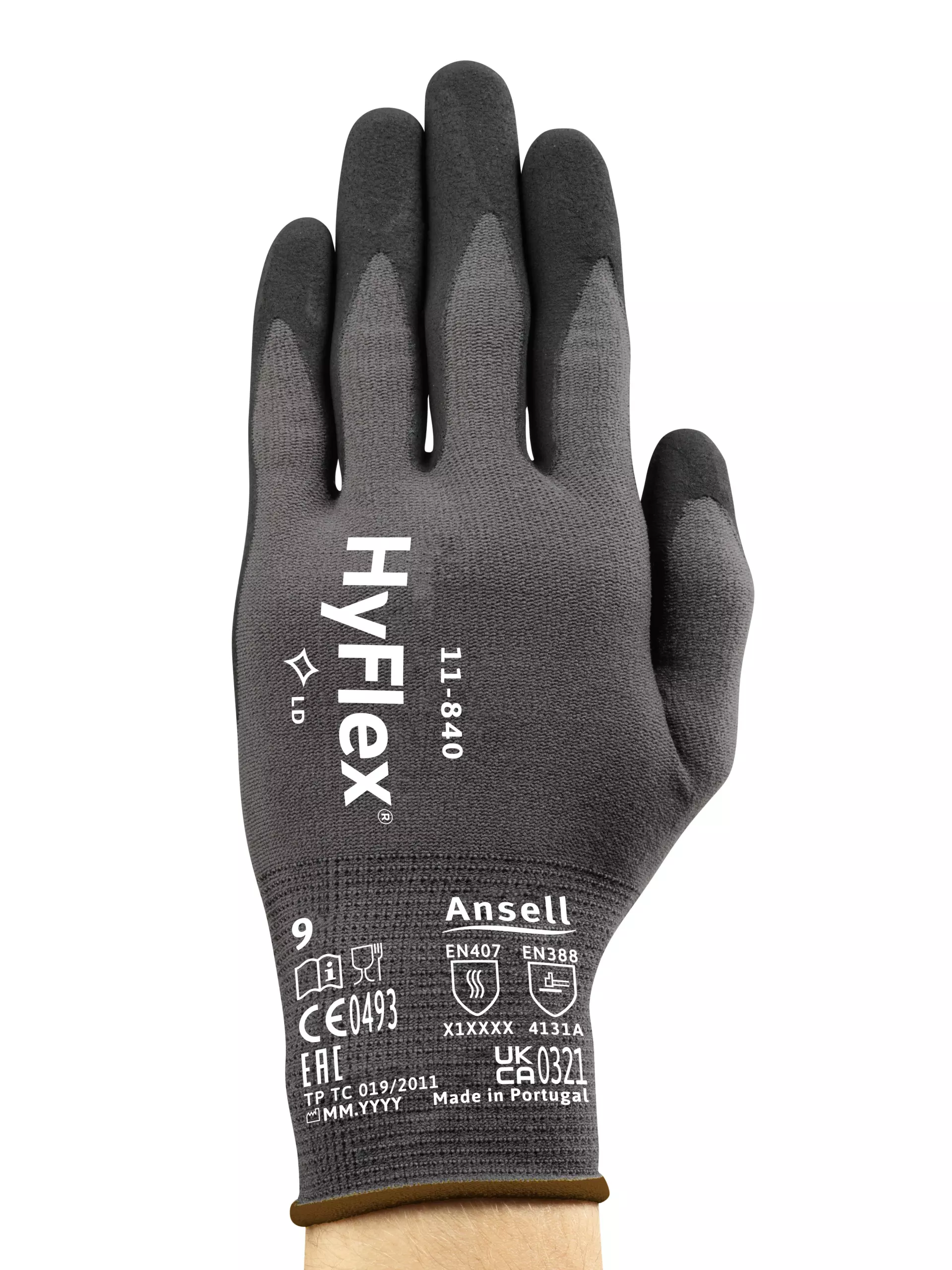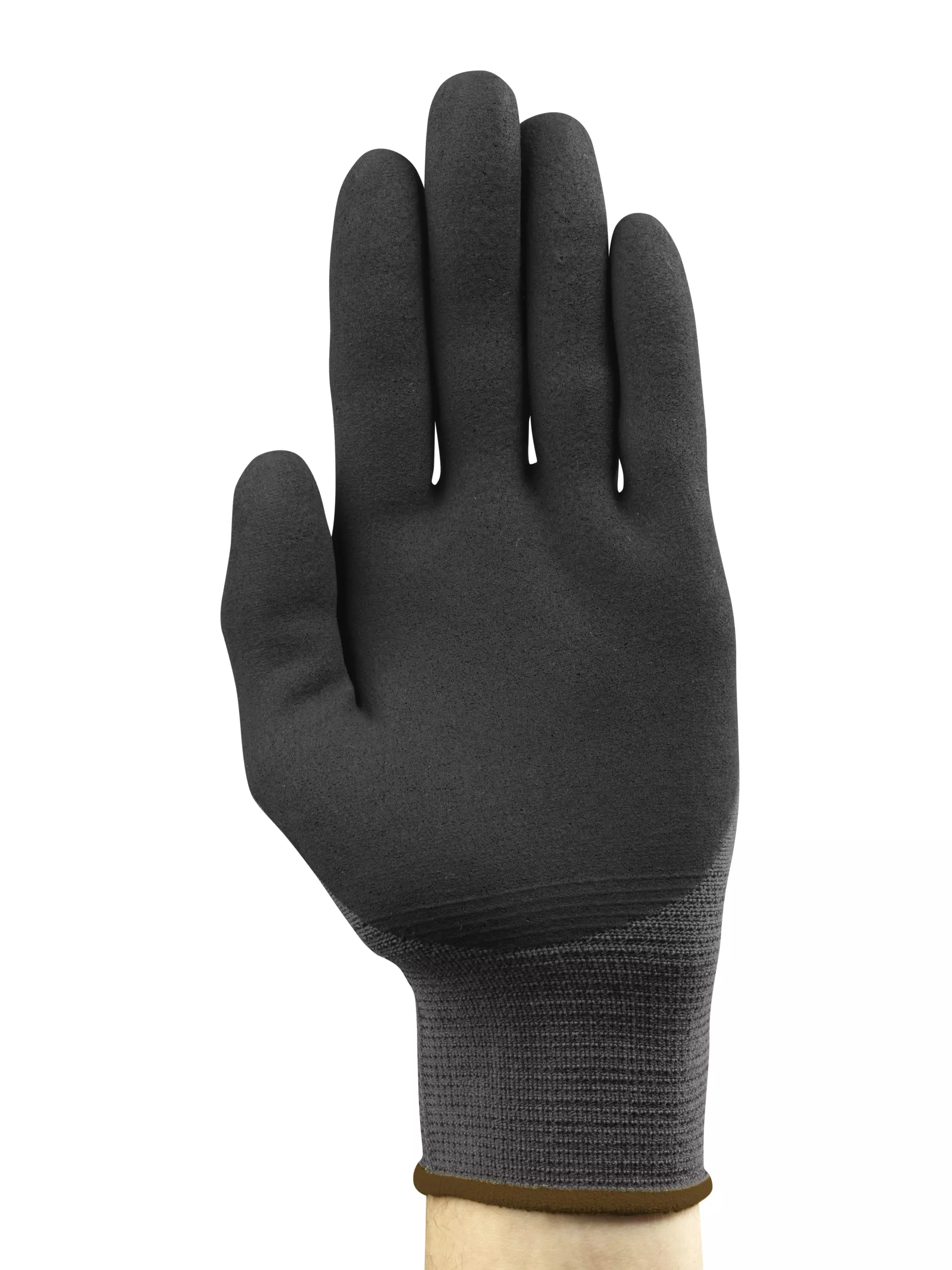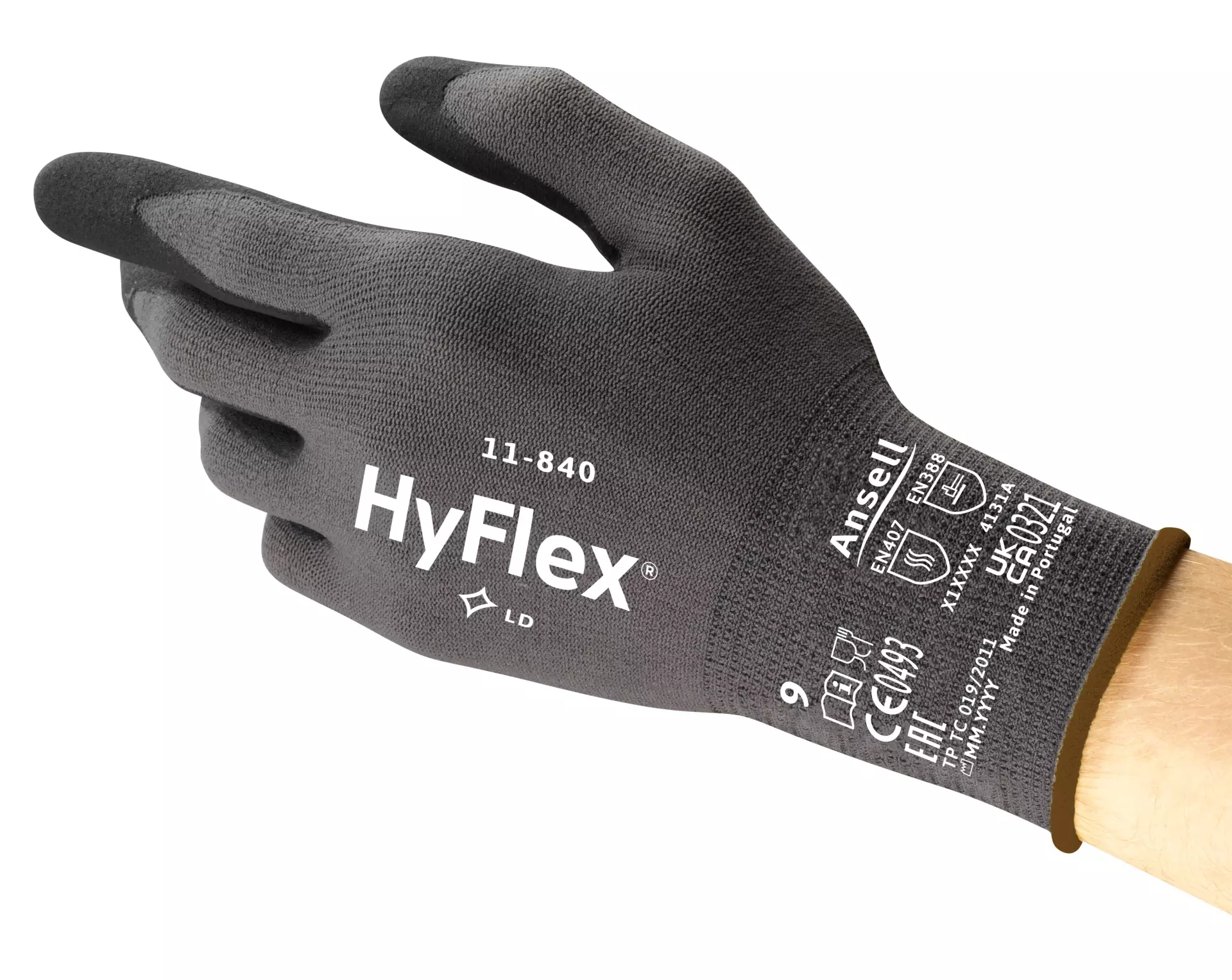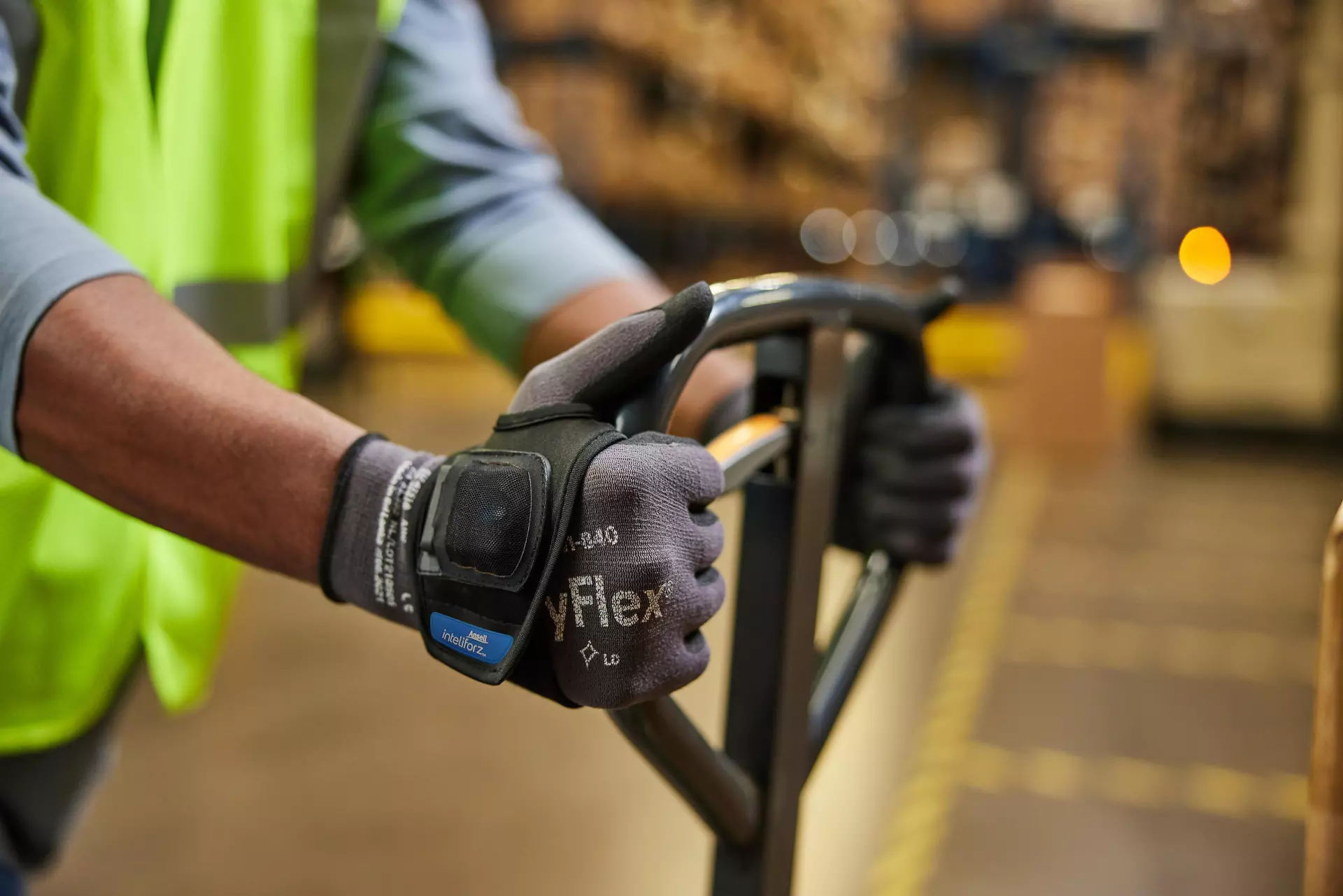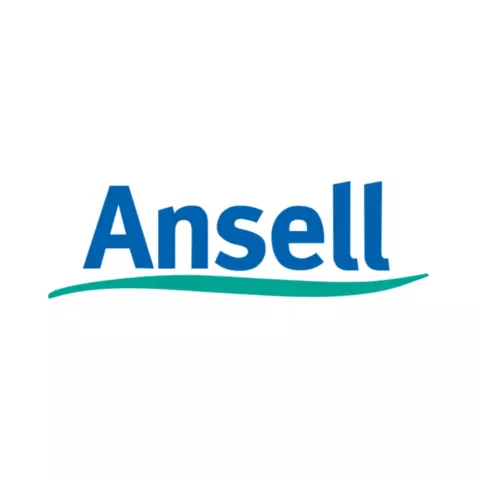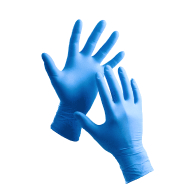HyFlex 11-840
4.9 / 5
Product description
Description
Improved durability and grip: These HyFlex® gloves’ FORTIX™ Abrasion Resistance Technology delivers 2x more grip and ensures ANSI/EN-compliant abrasion resistance*
Advanced ergonomics: ERGOFORM™ Ergonomic Design Technology ensures a fit shaped to natural hand contours
Elevated comfort: HyFlex® 11-840 safety gloves’ ZONZ™ Comfort Fit Technology relieves tension, for optimal comfort
Guaranteed skin-friendliness and cleanliness: HyFlex® 11-840 PPE gloves benefit from Dermatest® certification and an impurity-extracting proprietary washing process
Reduced contaminants: Silicone-free, they prevent contaminant transfer to metal before painting
Certified harm-free: They are also Oeko-Tex®-approved, certifying them free of substances harmful to human health
Recommended for
Assembly of small parts
General handling
Raw material handling
Picking, fastening components
Adjusting systems and screwing
Product Details
Antistatic : No
Length : 200-275 Mm/ 8-11 Inches
Available Sizes : 5, 6, 7, 8, 9, 10, 11, 12
Coating Color : Black
Coating Material : Foam Nitrile
Construction : Knitted
Cuff Style : Knitwrist
Finishing : Palm Coated
Gauge : 15
Grip Design : Ansell Grip™ Technology
Latex Free : Yes
Liner Color : Black And Grey
Liner Material : Nylon, Spandex
Silicone Free : Yes
Specific Needs : Oeko-Tex® Certified
Washing Temperature : 40 °C (104 °F
About Coated Cut Protection Glove
Coated Cut Protection Gloves provide essential hand safety with cut-resistant materials and specialized coatings for enhanced grip. Ideal for construction, manufacturing, and handling sharp materials, these gloves offer both protection and dexterity for demanding work environments.
- Antimicrobial Protection
- Machine Washable
- Hand Protection
- Cut Resistant
- Food Service
- Electrical Protection
Standards and labels
Ansell delivery terms
Free delivery for all Ansell products
487,01 €
Price per 12 packages (144 pairs)
3,38 € / pair
Free delivery
A carton contains 12 packages (144 pairs)
